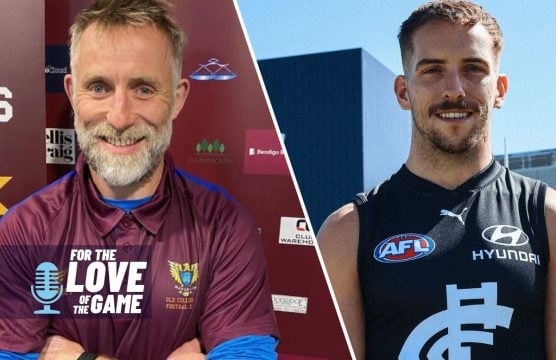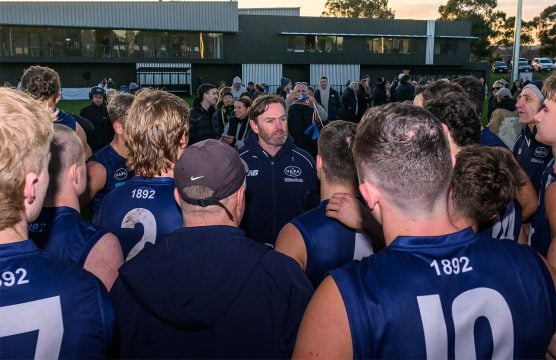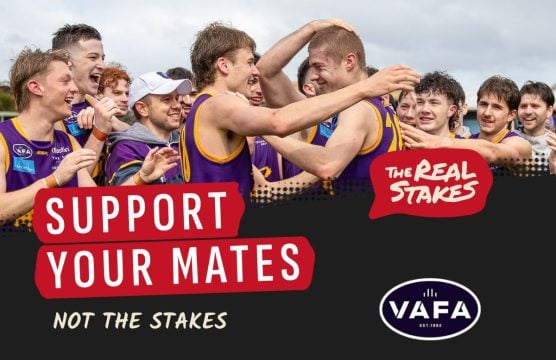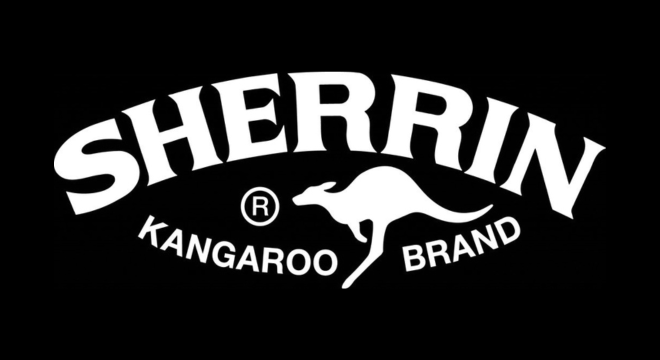19.5.11
Up the Junction
Who doesn’t love the St Kilda Cricket Ground, known these days more familiarly as the Junction Oval. It is the home of Old Melburnians, Old Geelong played there a couple of weeks back and there have been quite a number of Big V teams play there over the years too.
Old Melburnians have attracted a swag of new players this season and perhaps the opportunity to play and train on the magnificent surface was part of the attraction. Since moving to the ground in 1992, the OMs have won four senior premierships.
This is a ground with an exceptional and venerable history. For example –
-
the ground was originally built for cricket;
-
St Kilda Cricket Club has played at the ground since 1855;
-
three VFL grand finals have been played at the ground (1898, 1899 & 1944);
-
St Kilda played 564 home matches for premiership points at the ground between 1897 and 1964;
-
as late as round 22 in the 1984 VFL, it hosted a VFL game as Fitzroy’s home ground; and
-
during a VFL game at the ground in 1970, thick fog made it difficult for Paul Shanahan and Geoff Southby to see what was happening downfield (see below).
In terms of getting a feel for this ground’s rich history, it is hard to look past the VFL game played there in late May 1933.
In this round 5 game, despite having only 15 players left at the end of a brutal match, St Kilda defeated North Melbourne by 14 points. The Argus described this contest as a “battle rather than a game”. The following account is based on the contemporary newspaper reports.
It is necessary to place this game in context. The performance of St Kilda in the first three rounds of the 1933 VFL season did not match pre-season expectations.
At the Junction Oval in the third round, the home team struggled to combine in attack against Fitzroy. The St Kilda players lacked pace. “Hit Out” in The Truth reported that “the fastest Seasider was the rabbit that shot across the ground” in the third quarter. According to the report, a disgruntled St. Kilda fan had released the animal from a bag. Colin Deane, the club captain and playing coach, broke his shoulder. But the excellent performance of Stuart King provided one glimmer of hope for the club. A qualified solicitor, King had been recruited from the University Blacks. This was his first run in the senior side for the 1933 season. While King had captained the senior team in 1932, he had lined up for the club’s reserve team in the first few games of the 1933 season.
This loss prompted a “reform” group to call for the resignation of the selectors. The members of this group criticised the selection of unfit players. “Hit Out” suggested that King’s selection for the clash against Fitzroy had been the catalyst for the dispute.
The general committee of the club met on the Monday night after the Fitzroy game. As a result of his injury, Colin Deane resigned as captain. A majority of members expressed a lack of confidence in the selection committee. Three members of the selection committee – including its chairman, Dave McNamara – then resigned in protest. Ironically, another “reform” group had succeeded in having McNamara appointed to the selection committee in the previous year. A journalist from the Sun News Pictorial interviewed Mr. J. Lord, the club secretary, after this meeting. Lord told the journalist that “there had been some plain talk and it had done a lot of good”. Dave McNamara told the same journalist that the loudest critics of the selection committee had never played the game.
This resignation caused a sensation, given McNamara’s legendary reputation at the club. He was one of the most elegant kickers of the football. He had been able to punt the ball longer than any of his contemporaries at any VFL club. He played his first game for the “Seasiders” in 1905. A dispute with the committee in 1909 led him to join Essendon – a member of the Association at that time.
After training on the Thursday night, the players chose Clarrie Hindson as their new captain. The fact that he was captain of the Post and Telegraph team in the Wednesday League appears to have worked in his favour. Stuart King had put himself forward as a candidate. But he withdrew at the last moment. He was made captain of St Kilda in 1932, his second year at the club. “Hit Out” in The Truth reported that, had King been made captain, “there would have immediately been a big bust up”. Certain members of the general committee threatened to resign in the event that King regained the captaincy. They did not appear to be concerned about the fact that he re-joined the selection committee. McNamara was present at this meeting, informing the club that he would not resign from the general committee. The Sun News Pictorial informed its readers that, having selected their new captain, “the players had tea together and a musical evening followed”. Unfortunately, the report fails to throw any light on the precise nature of the musical entertainment.
Against this background of internal strife, the “Seasiders” travelled to the Lakeside Oval to play South Melbourne in front of a crowd of 18,000 people. South Melbourne had spent huge sums of money in recruiting champion players from Western Australia, Tasmania and South Australia. This group of players – including Nash, Bertram and Faul – came to be known as the “foreign legion”. Combined with local players, this group helped South Melbourne to win the flag that year. It was a season in which Pratt kicked 109 goals.
The final margin was four points in favour of the Bloods. Many considered that the “Seasiders” had been unlucky to lose this exciting tussle. Although Bill Mohr had a quiet day at full forward, his team mates played superbly. A burst of six goals from Pratt, Reville and Bertram saved South Melbourne from defeat. Pratt put the home side in front in the dying moments of the game. On the strength of this performance, “Hit Out” predicted that that the St Kilda would beat North Melbourne in the next round: “…they should be humdingers on their own garden patch.”
The “Shinboners” played the “Seasiders” in the round five game at the Junction Oval. At the first change, however, St Kilda led the visitors by five points. Frank Roberts, who went on to win two flags playing for Melbourne, kicked a goal in the last moments of the first half. At half-time, St Kilda led by six points. It was a violent affair. The visiting team lived up to its reputation for playing a tough and provocative style of football.
There is no record of what Colin Deane said to his players at half-time in the St Kilda dressing room. Sucking on their lemons, many of the players would have been shocked at the sight of six team mates receiving sustained medical attention. The captain was thought to have a broken fibula. Mohr and Roberts were believed to have broken ribs. “Weary” Cave and Roy “Tiger” Bence were receiving treatment for cuts to their heads. Having received some treatment for his sprained thumb, Bill Downie decided that he could to continue to take part in the ruck contests. Despite the good work of Dr Jones and Jack McConnell (a trainer who had been at the club for 45 years), it became clear that St Kilda would play the second half with less than eighteen men.
Sixteen men took the field for St Kilda at the beginning of the third quarter. Colin Deane opted to play with one less forward and one less follower. Any concerns about the effect of this numerical disparity vanished when the “Seasiders” matched and mastered their opponents. The St Kilda players were faster and more elusive, moving the ball to their forward line with speed and precision. The North Melbourne players became increasingly frustrated with their inability to match their gallant opponents. Tempers flared and, according to “Onlooker” in The Argus, “the play developed into a battle rather than a game”. , St Kilda’s Bence was was carried from the ground after another violent collision, reducing the home side to fifteen men. A few seconds later, a North player threw Harry Compte to the ground. This action prompted some St Kilda players to remonstrate with their opponents. Players from both teams gathered in the centre of the ground and the umpire was forced to stop play for a few minutes.
St Kilda scored its tenth goal within twenty seconds of the bell sounding to signal the start of the final quarter. The tall man, Lewis, made a sporting gesture at the beginning of the final quarter. He ordered a team mate to leave the centre, ensuring that each team had one follower at the centre bounce contests. In any event, he thumped the ball forward at the first ruck contest. Having seized the ball, Jack Davis made a precision pass to Frank Roberts. This passage of play concluded with Stuart King kicking the goal. The “Seasiders” continued to dominate their opponents throughout the final quarter. Bourne was cool and polished on one wing, while Neil was fast and tenacious on the other one. Both initiated decisive thrusts forward for St Kilda in the final quarter. The fifteen “Seasiders” managed a famous and improbable victory. At the final bell, the margin was fourteen points.
The number and extent of the injuries were documented on the front page of The Sun News Pictorial on the following Monday. Kicking a total of four goals, the Argus named King as one of St. Kilda’s best players that day. It also nominated John Anderson, St Kilda’s centre half forward, as the other outstanding player – “his dazzling runs, soaring marking and remarkable stamina were delightful to watch”.
A journalist from Table Talk visited St Kilda at the Junction Oval on the Tuesday night following this famous victory. According to his report, on entering the rooms, he was overwhelmed by a mixed odour of iodoform, lint and iodine. The club doctor ran through a lengthy list of injuries, almost all of which had been acquired in the game against North Melbourne. Two club legends, Dave McNamara and Wells Eicke, looked on as the doctor attempted to patch up the injured men. Among the injured, Clarrie Hindson had a broken ankle and Bill Mohr had two broken ribs.
St Kilda did not make the finals in 1933. The club presented a medal to each player who had played a part in this triumph. The team had many champion players. But, like many of its successors, it failed to live up to its potential.
It is exciting and humbling to consider that the VAFA and OMs are continuing the tradition of good football at this grand old ground. whenever one visits, it’s hard not to feel that some pretty exciting things have happened there in the past.
Robert Heath will write regularly for vafa.com.au this season. his viewpoints are his own and not necessarily the views of the VAFA.
6.4.11
The Synners
For some time, Chadstone has been doing it tough in Division 4. In 2008, at the end of the season, the club changed its name from Syndal Tally Ho to Chadstone. Since that name-change, the club has not won a single game of competitive football in Division 4.
Against this background, I decided to contact the club to see how preparations were going for the upcoming season. I spoke with Rees Quilford, the club secretary. In our conversation, Rees did not side-step the club’s uninspiring performance over the last two VAFA seasons. But what he said supports the football theory that, no matter how poorly a team performed in the previous season, the upcoming season brings a genuine and re-invigorated sense of hope.
What has happened since the last season? How has this lowly club set about turning the discouraging situation around? According to Rees Quilford, the answer lies in the players’ adoption of a new club culture of “dedication and responsibility”.
For clubs in the upper divisions of the VAFA, there are no problems in achieving and maintaining the levels of dedication required to win football games on a regular basis. Of course, it is easy to achieve and maintain this level of dedication when the club’s players train and play with an expectation of success. But it is much harder task for clubs without a history of recent success.
It is easy to forget that the difficulty of this task is the same for “elite” clubs without a history success. Followers of the Hawthorn Football Club will recall that the push towards the 1961 VFL flag began with John Kennedy’s insistence that each and every player participate in a coach-led run on every Sunday morning. In that case, the players could not avoid falling in behind the coach as he himself started running.
In terms of the task facing his club, Rees Quilford put it this way –
It is very difficult to make the changes when you’re starting from a long way back. Blokes get sick of training; they want to do other things in their lives. There is not much incentive to come down to the club and do the work. But things have definitely changed this year.
Rees Quilford told me that the change stemmed initially from the appointment of the club’s new Senior Coach. Late last year, the club announced the appointment of David Cafarella as Senior Coach for the 2011 season. He has over 15 years of coaching experience; and he was the Reserves Coach at Old Mentonians (Division 1) for the past three seasons.
It was at this point in the conversation that the enthusiasm of the club secretary interfered with his ability to recount accurately the changes introduced by the new coach. This enthusiasm was refreshing and exciting.
There is a modern twist in the way in which the new senior coach has gone about his work over the last few months. David Cafarella is not a stern disciplinarian in the mould of John Kennedy or David Parkin. Like Tom Harley, he is an adherent to the “Leading Teams” philosophy under which the players themselves assume responsibility for their approach and conduct. This philosophy is reflected in the following written invitation David Cafarella issued to the club’s players in late 2010 –
I offer you the challenge to commit to the tasks that will make you go beyond your limits to improve yourself as both a footballer and an individual and to revel in the success that your hard endeavours will bring.
Rees Quilford told me that, in terms of training, the players have accepted this unequivocal invitation. Since the commencement of pre-season training on 1 December last year, the players have adopted an uncompromising “back to basics” fitness regime. In practical terms, this philosophy means that all of the players must commit to “having a real go” in each and every training session.
The new coach has introduced many new training drills, most of which attempt to simulate “game day pressure”. The old training drills are no longer used. If you go down to the Jordan Reserve in Chadstone on a Tuesday night, you won’t see any circle work. But you will see a calm and measured coach encouraging his new charges to tackle sophisticated drills.
In terms of the way in which the senior team shall approach games, there is a new emphasis on defence and maintaining possession of the ball. Rees Quilford told me confidently that spectators can expect to see more handballing this season. The new coach has emphasised the use of handball to work through defensive lines. He has also emphasised “giving off” cleanly and effectively as the first option for each player.
The new approach has spilled into other areas of the club’s activities. The club is still running “on the smell of an oily rag”, according to Rees Quilford, but the players have begun shouldering a new and considerable burden in that regard. In my view, this is one sure sign of a healthy and successful club.
Towards the end of our conversation, Rees Quilford tempered his sense of enthusiasm. He told me that the club is “coming from a long way back” and “it has a long way to go”. But it did not take long for the new sense of enthusiasm to come back –
The new coach brought some new players to our club. They’re pretty handy. There are some blokes who have been out of the club for a few years. They have come back into the fold. They liked the look of things happening at the club. It’s now the case that blokes have to earn games – unlike the last few seasons in which we battled to put out a full team. We are now starting to build a culture of success. I reckon we’re going to have a development year. But we are now looking for respect.
Towards the tail-end of our conversation, I felt genuine excitement regarding the prospects of this reinvigorated club. I asked Rees Quilford about Round 1. I had not anticipated his response –
We’ve got Swinburne University in Round 1. We beat Swinburne in the Division 4 Grand Final in 2001. That was the club’s last flag. We’ve got a lot of old players coming back to the club to celebrate that famous victory. We’re going to have a function after the game. Everyone at the club is getting excited and we’re looking forward to the new season.
Rees Quilford has played his last game for the club (“My hammies and knees gave way last year”). But he’ll be there watching Chadstone take on Swinburne at the Jordan Reserve at 2pm on 9 April this year. If you get a chance, go down and have a look at the Chadstone boys take on Swinburne in a few weeks. Their new approach to the game – particularly given their complete lack of success over the last few years – embodies all that is good and great about amateur football.
Robert Heath will write regularly for vafa.com.au this season. his viewpoints are his own and not necessarily the views of the VAFA.













